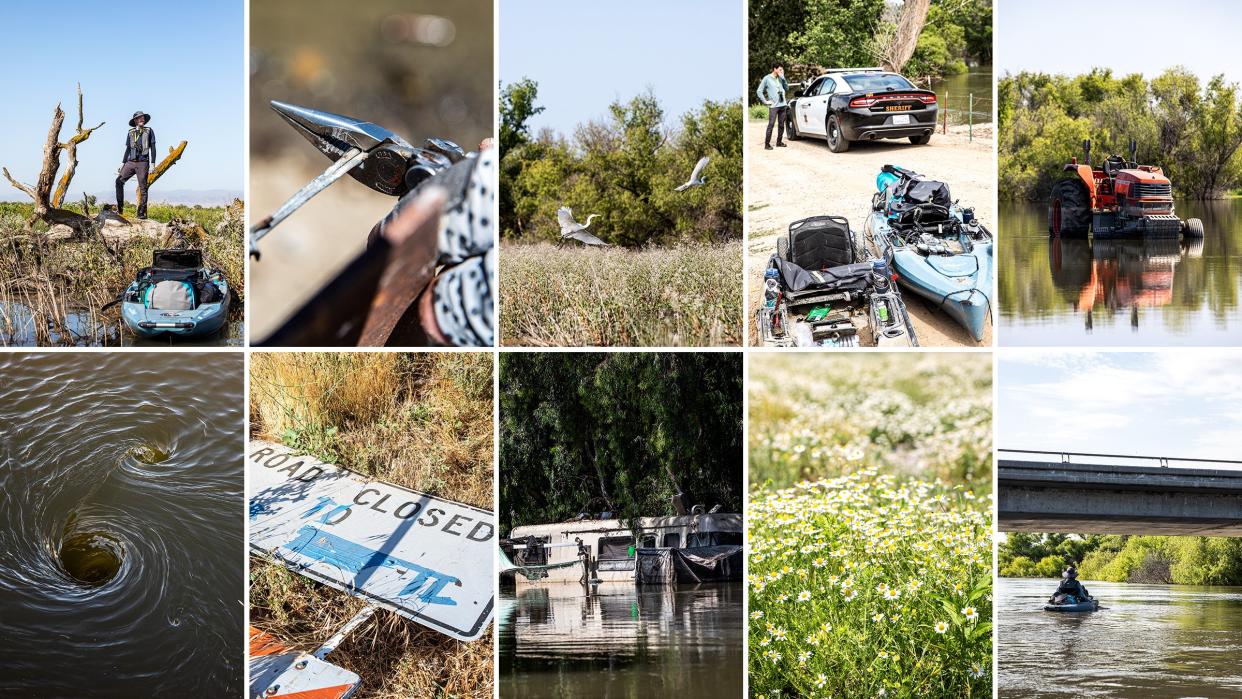My Wild, Wet, and (Sometimes) Miserable Paddling Trip Through the Heart of California

This article originally appeared on Outside
The sun had risen above the asthmatic haze of California's San Joaquin Valley, and the disaster tourists would soon be arriving at the edge of Tulare Lake to take their selfies. It was a Saturday, two days before Memorial Day. County health authorities had warned the public to stay out of the contaminated water, an unwholesome brew of pesticides and animal waste. As for the Kings County sheriff, during media interviews he had informed would-be gawkers that the lake bottom--a vast depression at the southern end of the nation's breadbasket--was private property. Trespassing rules would be strictly enforced.
Our shuttle driver, Vincent Ruiz--a 360-pound trucker, originally from Guadalajara, who owned a 13-acre farm a few blocks from the flood zone--steered around a ROAD CLOSED sign without a care. "Damn, I hadn't seen this," he said with quiet awe as we gazed upon acres of flooded pistachio trees. All goners.
We crossed a narrow bridge on 16th Avenue, which ran south from the city of Lemoore, and parked at a high spot, just before the pavement dipped into the drink. Tom Fowlks, my partner in crime, was there waiting in his baseball cap and sun shirt. A swollen cow pie swayed in the brown water next to our kayaks. Vincent leaned against the hood of his Jeep and said it was better us than him; no way he was getting in that water. My Tacoma would be safe next to his chicken coop until we returned, whenever that might be.
Though I had no interest in tangling with Johnny Law, I recognized this unusual spring for what it was: a once-in-a-generation opportunity to travel, by way of the federally navigable waters that all Americans have a stake in, 200-plus miles from the heart of these floods, a natural disaster by any measure, to the man-made disaster that is the Delta of San Francisco Bay. Between January and March of 2023, a total of 31 atmospheric rivers dumped nearly 60 feet of snow on Donner Pass and rain everywhere else. The last time that much snow fell in the mountains was 1952--the year I Love Lucy wrapped up its first season on television.
The storms resurrected the lowland connections among the valley's water-starved rivers, whose flow had long been hijacked by farming barons, now trading their acre-foot allotments like crypto. (The main difference is that water, unlike Bitcoin, doesn't usually get cheaper.) Some 326 billion gallons of liquid would be cascading down from the Sierra Nevada, undercutting homes, drowning multimillion-dollar almond orchards, and putting towns at risk of becoming fishbowl dioramas. The maximum-security prison in Corcoran, where Charles Manson had been held until his death, was protected by a 188-foot levee authorities feared was still too low to guard it from this normally dry lake, which now rivaled Lake Tahoe in surface area. (Tahoe covers 191 square miles.) Sheriffs in five counties were trying to keep people out of the surging rivers with emergency orders that reeked of nanny-state overreach in a part of California where the politics were more West Texas than West Hollywood.
For exclusive access to all of our fitness, gear, adventure, and travel stories, plus discounts on trips, events, and gear, sign up for Outside+ today.

